Ease in Motion: Rehabilitation Inspired by Science, Guided by Art
By Francesca Tuazon, PhD
Although I am a formally-trained developmental biologist and scientific researcher, I am also an avid appreciator, and sometimes practitioner, of visual art. My current work leverages the overlap between science and art to empower trainees from underrepresented backgrounds in their fields. This professional interest grew from my graduate experience where I was continually struck by the similarities between science and art, from process to underlying philosophy. Importantly, the interplay between science and art also deeply impacted my personal rehabilitation from multiple surgeries and injuries during my graduate work. Here I share how art helped me translate a principle from chemistry into a grounding and liberating framework for my own physical healing.
Dynamic Equilibrium in Chemistry, and Beyond?
I was first exposed to Dynamic Equilibrium in a high-school chemistry class, where I learned a definition that didn’t mean that much to me; in college I learned some math to go along with that definition. Dynamic Equilibrium didn’t resonate with me until my graduate elective course in biochemistry, where our professor encouraged us to focus on conceptual implications instead of just solving chemical equations. Professionally, this emphasis on the broad ramifications of biochemistry principles significantly shaped my graduate research. Despite being in a different field, my dissertation focused on how biochemical reactions between just a few proteins can guide an embryo to correctly develop into an adult.1 Personally, it opened the door to applying scientific concepts to my everyday life, something that became profoundly important during my long and tumultuous journey with rehabilitation.
My graduate re-introduction to Dynamic Equilibrium happened 9 months after an unexpected ankle surgery, which was on top of back-to-back knee and Achilles tendon surgeries. My career as an avid soccer player had caught up with me, and I had three major surgeries in as many years. I had just finished my physical therapy regimen, but I was frustrated and confused. I thought finishing my treatment meant I was fully healed, but I felt nowhere close to that! I desperately wanted to feel like myself before the surgeries, but my rehabilitation had been a roller-coaster of breakthroughs and backsteps, peppered with intense frustration and re-injury. Something wasn’t working. Then I was struck by an intriguing overlap with Dynamic Equilibrium: equilibrium is reached when a reaction is ‘done,’ and I desperately wanted to be ‘done’ with my rehabilitation. Perhaps I could find what was holding me back by looking at the process and principles behind Dynamic Equilibrium, gaining clarity from chemistry.
Dynamic Equilibrium Explained
I offer this simple visual introduction to Dynamic Equilibrium and a longer tutorial, both found online. As demonstrated in these videos, in chemical reactions, reactants are converted to products at a certain rate, while products are converted back into reactants at another rate (Fig. 1, left panel). Reactions want to equalize these forward and reverse rates so that there are constant, but not necessarily equal, amounts of reactants and products (Fig. 1, right panel). With constant amounts of reactants and products, there is no visible macroscopic change in the reaction, and equilibrium is reached. Equilibrium is dynamic, however, because individual molecules are still moving through the forward and reverse reactions, just at equal and balanced rates.

Figure 1: Left panel: When reactants (r) are converted to products (p) at unequal rates (arrows), the amounts of reactants and products will change over time. Right panel: At Dynamic Equilibrium, reactants (r) are converted to products (p) at equal rates (arrows) and amounts of reactants and products remain stable over time.
What I found remarkable about Dynamic Equilibrium was that even when a reaction is ‘done,’ molecular movement is still happening. This means that the desired end-state in chemistry is one of balanced motion. I wondered if the same could be true for rehabilitation.
But I was stuck; what does balanced motion mean in the context of my physical healing? What does it look and feel like, and how can it be achieved? To tackle these questions, I leaned on my experience with visual art, which had always enabled me to understand complex and nuanced emotions or experiences. By finding examples of Dynamic Equilibrium in art, I hoped to better understand the process and underlying philosophy of balanced motion to inform my rehabilitation.
Translating Dynamic Equilibrium Through Art
In the balanced motion of Dynamic Equilibrium, everything is moving and yet nothing is changing. This dynamism and emphasis on kinetic movement reminded me of the works of Alexander Calder (1898-1976), an American sculptor with a keen and constant interest in depicting motion.2 In fact, Calder redefined sculpture as a dynamic art form since many of his works could actually be in motion,3 as seen here. Perhaps Calder’s most well-known contribution is the mobile: moving sculptures hung from the ceiling with elements or groups of elements that freely and independently move. The mobile’s arrangement is constantly changing as it interacts with its environment, whether by responding to the air currents created by passing visitors or casting a shadow unique to each moment in time.3 A Calder mobile embodies Dynamic Equilibrium because although it is a finished sculpture, it remains in constant motion.
I encountered my first Calder mobile as a child visiting the National Gallery in Washington, DC with my family. Suspended in the quiet and cool atrium of the East Building, the behemoth Untitled revolves slowly (Fig. 2). Designed in 1972 and installed in 1977, the mobile has two main assemblies: the upper section is defined by horizontal wedges, six black and the largest blue, that slice through space, while the lower section is defined by more vertical and triangular panes, painted red, and suggestive of Earth’s gravitational pull. The mobile’s graceful dance on the air currents belies its massive size; with a wingspan of over 85 feet across, the tail misses colliding with the walls by mere inches.4 But, instead of feeling menacing, the mobile feels majestic and even uplifting.

Figure 2: Alexander Calder, Untitled (1976). Image Credit: © Board of Trustees, National Gallery of Art, Washington, 2022. © 2022 Calder Foundation, New York / Artists Rights Society (ARS), New York
While Untitled epitomizes Calder’s later career, characterized by monumental public works, the Arc of Petals mobile (1941) represents his more intimate works. Arc of Petals is a smaller, vertical cascade just under 8 feet high (Fig. 3). The arrangement feels antigravitational, with larger and far-reaching shapes at the top giving way to smaller, denser, and dangling sections at the bottom5 (Fig. 3). This contrast between the top and bottom assemblies is underscored by color differences: shapes at the top are painted black, while shapes closer to the bottom are shiny, unpainted aluminum. Arc of Petals also hangs lower in its gallery, which, along with its smaller size and vertical arrangement, means that the mobile shares space with the viewer and can rapidly respond to a nearby individual’s movement, as seen here. Uplifting in a different way, this tinkling and twirling mobile invites the viewer to dance, interacting with and transforming art in real time.
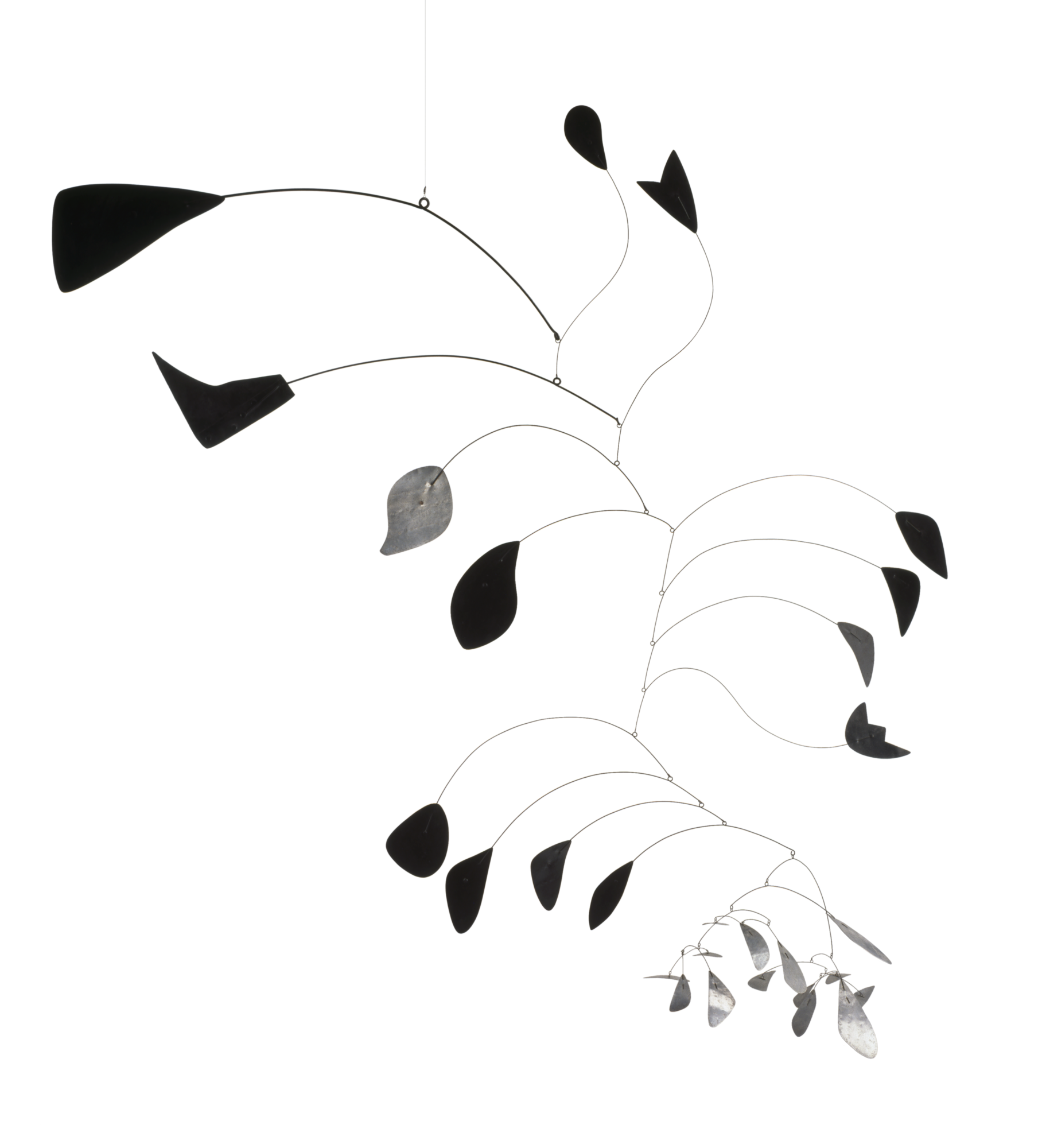
Figure 3: Alexander Calder, Arc of Petals (1941). Image Credit: The Solomon R. Guggenheim Foundation, Peggy Guggenheim Collection, Venice. © 2022 Calder Foundation, New York / Artists Rights Society (ARS), New York.
Despite these differences, Untitled and Arc of Petals are both intricately-balanced mobiles. Paradoxically, Calder did not achieve this “buoyant” balance2 through perfect symmetry, but through “disparity in form, color, size, weight, [and] motion.”5 Instead of precisely mirroring each other, the varied assemblies of a Calder mobile retain a similar visual weight in direction (vertical or horizontal), color group, or shape, to create a sense of balance.6 This asymmetric balance is as much a hallmark of Calder’s sculptures as their ability to be in motion. Asymmetric balance can also characterize Dynamic Equilibrium since there is a constant, but not necessarily equal, balance of reactants and products.
Dynamic Equilibrium and Rehabilitation
Importantly, Calder’s mobiles revealed what Dynamic Equilibrium could look like: complex assemblies in motion, achieving balance through their asymmetries and constantly interacting with their environment. Even more revelatory was how these visual representations of Dynamic Equilibrium made me feel: both works inspired calm, grace, and ease, reminding me of the beauty of the present moment. They were the embodiment of a deep breath that beckons you to take one, too. This is what I had been missing; I needed to translate how Dynamic Equilibrium looked and felt into my own rehabilitation. I call this mix of capabilities Ease in Motion and I used the process and philosophy behind Calder’s mobiles to guide me to a new rehabilitation framework.
Ease in Motion: A Rehabilitation Framework
If I wanted to achieve the Ease in Motion embodied by Calder’s mobiles, it became clear that the goal of my rehabilitation would have to be different than what it had been. As a competitive soccer player, my goal had solely focused on peak performance; I thought that once I reached a certain level of performance, I would be fully healed. Unfortunately, this level of performance was arbitrary (set more than 10 years ago by this point) and had only led to re-injury. In contrast, Calder’s mobiles were designed for participation: they constantly interact with their environment, from the daily conditions of the gallery to the lived experience of their viewers. Similarly, Dynamic Equilibrium is not a static endpoint, but a constant state of motion. This lens prioritizes the journey over the destination and spurred me to radically redefine what it meant to ‘feel like myself’ again.
From ‘Peak Performance’ to Ease
My goal for rehabilitation shifted from a peak level of performance to an easeful participation in everyday life—but it was not a smooth transition. Without performance metrics to chase, I felt unsettled, disoriented, and uncertain; I needed a framework to ground my focus and measure my progress. Taking direction from Calder’s mobiles, I refined this goal of participation as the ability to adapt and interact with the conditions of the moment. I saw that Calder’s mobiles achieve this through a structural integrity that enables them to remain both in motion and balanced despite asymmetric arrangements. These principles of strength, mobility, and balance became the pillars of my rehabilitation as I sought Ease in Motion.
Achieving Ease in Motion: A Physical Process
How did Calder achieve this strength, mobility, and balance in his mobiles? While other, more contemporary artists have designed mobiles based on mathematical calculations,7-8 Calder’s process was organic and intuitive. He started small, balancing the smallest unit first and then finding a new balance point every time he added a new set of shapes.9 Through this iterative adjustment of each unit or connecting rod, Calder constructed expansive mobiles balanced by their asymmetries.
Importantly, he had to be keenly aware of the asymmetries between shape sets and build sturdy-enough supports to balance the full assemblies. This is where I began: the physical process of assessing my asymmetries and the solidity of my frame.
Finding Asymmetric Balance
My injuries had crisscrossed my body, from left to right then right again. Intellectually I knew I had some imbalances, but it wasn’t until I discovered alignment-based yoga that I physically noticed the prevalence, and sometimes staggering repercussions, of my asymmetries. This awareness enabled me to work with each asymmetry, either as an individual unit or as part of a kinetic chain. I prioritized targeted strength exercises and unilateral movements, and I sought acupuncture, massage therapy, and Graston technique specialists to address scar tissue buildup and nerve pain. I slowly familiarized myself with the tiny and numerous stabilizing muscles of my feet, ankles, knees, and hips, which required a surprising amount of exertion that was often invisible to the eye. Fittingly, this reminded me of the complexity of moving parts in Calder’s mobiles and the vigorous molecular motion of Dynamic Equilibrium.
Adapting and accepting these physical asymmetries (which we all have on some level) also required a closer look at my frame’s foundation: my feet. Surprisingly, as I focused on their strength and balance, my feet expanded, slowly widening until my toes could extend to their full reach and length. To my shock and chagrin, I realized that my shoes (including soccer cleats) were all a half to full size too small! As one would expect, once I gave my feet the space to expand and be fully grounded, I instantly felt more stable and balanced despite my many asymmetries. This podiatric revelation also evoked Calder’s mobiles since, no matter the scale, they fully occupy their space with far-reaching shapes balanced by a sturdy and expansive skeleton.
Achieving Ease in Motion: A New Mindset
Each Calder mobile also has a clear message: slow down and take in the beauty of the world around you.3 This was consistently communicated by invoking nature: the suspended abstract shapes might suggest leaves or petals falling (Figs. 2 and 3) while the unhurried revolutions of each unit mirror the energetic forces that surround us, one of Calder’s core inspirations.2 Importantly, the purpose behind the strength, mobility, and balance in each mobile was to adequately reflect the calm and grace of the natural world. This inspired me to look to nature to contextualize my search for Ease in Motion. What I found was a new mindset for rehabilitation, one that emulates the pace and playfulness of the natural world.
I took Calder’s call to engage with the energetic forces around us seriously and started to garden, hike, and sneak at least a few moments outside each day to connect with my surroundings. I was struck by the gradual yet unfailing change of the seasons (and ability of weeds to grow!); despite moving at a glacial pace, dramatic change could suddenly occur. This mirrored my own experience with rehabilitation, where it often felt like invisible efforts were yielding only miniscule results. And yet, year after year, I could see and feel profound improvement on all fronts. This underscored that nature’s way is not one of static perfection or ‘powering through,’ but instead of accumulating constant, and persistent, small changes. Similarly, Dynamic Equilibrium relies on continuous motion at the molecular level, while Calder’s mobiles coordinate many moving parts to continuously create new configurations.
Finding a Little Fun
Connecting with nature also inspired a child-like wonder10 as I saw that there’s so much to savor when you take the time to look. Calder’s mobiles similarly invite the viewer to step out of the busyness of their daily life and reflect on the joy of being alive.3 Rehabilitation can be a daunting and unfamiliar process, but wonder and play gave me the humility, courage, and patience to persevere or change course when necessary. Although appreciation and humor were essential to my rehabilitation, they were challenging to maintain in the face of traumatic surgeries and daily discomfort. It remains a daily commitment to find something that makes me giggle: a zinger from my favorite tv show, my pet’s bizarre antics, or simply the thought of that colorful and immense arm of Calder’s National Gallery mobile nearly nicking the pristine atrium wall (Fig. 2).
Conclusion
I hope that I have provided a framework that others may apply to their own rehabilitation. Ease in Motion is inspired by the chemistry principles of Dynamic Equilibrium and translated to the human experience through Alexander Calder’s mobiles. Drawing on themes from Calder’s moving sculptures, Ease in Motion encompasses a physical process as well as an underlying philosophy that can be practiced and applied over a lifetime.
I strive for Ease in Motion by embracing asymmetrical balance, expansively taking up space, slowing down to tune in, and encouraging my sense of wonder. This approach to rehabilitation has been liberating, grounding, and, most importantly, effective. I have not only progressed in strength, mobility, and balance, but I am also consistently an active participant in my daily life.
I am deeply grateful for this connection between Dynamic Equilibrium, art, and rehabilitation. It has shown me that I am healed in more ways than I previously thought, and that, paradoxically, the best way to appreciate what I have is to continue my rehabilitation. This continuous tension, or balance, between my desire to move forward and my acceptance that I am perfect as I am is an exhilarating dance of being both healed and healing. Like Calder’s mobile riding the East Building air currents, it is a dance in Dynamic Equilibrium.
References
- Tuazon F, et al. Proteolytic restriction of chordin range underlies BMP gradient formation. Cell Reports (2020).
- Rower ASC. Calder Sculpture. Universe Publishing; 1998.
- The Metropolitan Museum of Art. Alexander Calder, Mobile. In: Smarthistory, January 27, 2016. Available at: https://smarthistory.org/alexander-calder-mobile/. Accessed May 5, 2022.
- National Gallery of Art. Alexander Calder, Untitled. Available at: https://www.nga.gov/collection/art-object-page.56517.html. Accessed May 5, 2022.
- Flint L. Alexander Calder, Arc of Petals. Available at: https://www.guggenheim.org/artwork/745. Accessed June 30, 2022.
- Mittman AS. Balance, symmetry, and emphasis. In: Smarthistory, July 10, 2019. Available at: https://smarthistory.org/balance-symmetry-and-emphasis/. Accessed June 17, 2022.
- Kwauk M. Geometric mobiles: from conceptualization of motion in space to rational design. 32(4)1999.
- Kwauk M. Holistic polyhedrons: a new concept of making mobile members. 34(4)2001.
- Hinish H. Children’s Guide, Alexander Calder: 1898-1976. Board of Trustees, National Gallery of Art; Washington, DC; 1998.
- Carson R. The Sense of Wonder. HarperCollins; 1956.


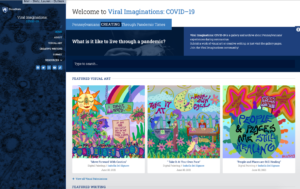
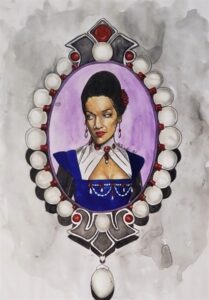
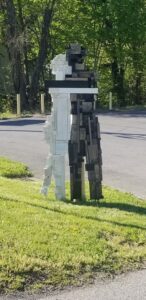
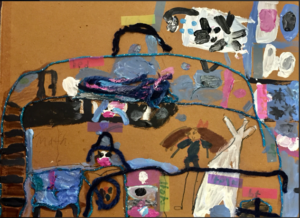
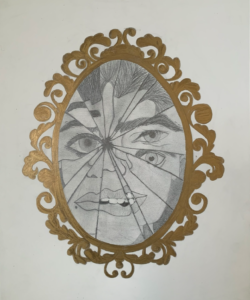

 Member since 2019 | JM14274
Member since 2019 | JM14274


NO COMMENT